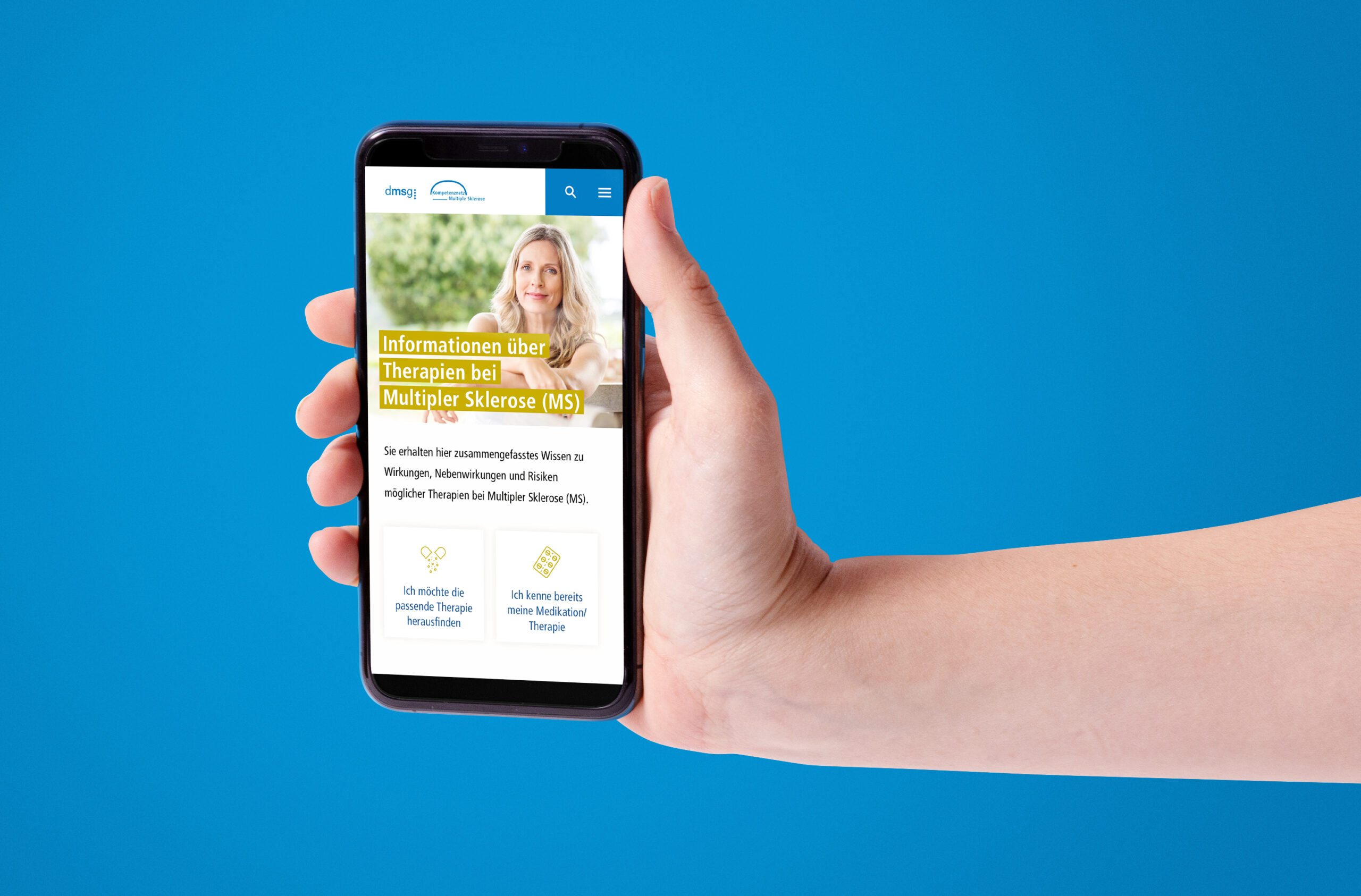Digitization of patient handbooks
DMSG
Customer
2 Month
Duration
Experience Design
Role
Cocomore
Context
German
Language
Objective
We have digitized patient handbooks for the German Multiple Sclerosis Society (DMSG) to make it easier and faster for patients to find out about the various options for MS immunotherapies.
How can we provide MS patients with different levels of prior knowledge with the specific information they are looking for and help them to recognize differences between individual therapies more easily?

There are two primary use cases for patient handbooks. One user already knows their therapy, has already had a consultation with a doctor and wants specific information about the respective medication or wants to change medication. In this case, the patient needs quick and targeted information about one or two forms of therapy that they already know. Other users are not yet familiar with their therapy and want to obtain general information and make comparisons before the consultation. Here, there is not only a need for information about therapies, but the patient also needs help in making the final decision and understanding the differences between the individual medications.
Learning Path
- Desk research on existing solutions
- Analysis of other MS platforms
- Content review of all analog manuals
- Adapt the content to a common, digital information architecture
- Creation of use cases
- Development of solution concepts incl. user flows
- Translation into wireframes
- Describing the behavior as a handover to visual design and programming
One difficulty in digitizing the patient manuals is to determine exactly which content is the same for all manuals, i.e. which can be merged and which work specifically. How does the digitization of content affect didactics? Can the existing structure be adopted or does the user need a general, thematic introduction for a better overview?
Both patients who already know their therapy and patients who are still completely unfamiliar with it are picked up on their respective level of knowledge through two narrative threads (one abbreviated, one detailed). A comparison function makes it possible to compare two medications based on thematically identical paragraphs or chapters. The intuitive navigation makes it easy to switch between medications, chapters and paragraphs at any time. Details can be functionally noted, marked, saved or sent for subsequent visits to the doctor.